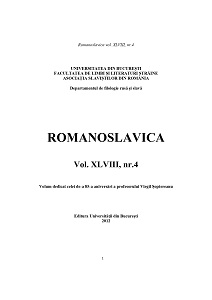„Mitraliera de lut” – între menipeea bahtiniană şi deconstrucţia mitului sovietic
"Clay machine gun" - between the Bahtinian menipeea and the deconstruction of the Soviet myth
Author(s): Elena-Cristina GiugălSubject(s): Novel, Comparative Study of Literature, Russian Literature, Theory of Literature, Sociology of Literature
Published by: Editura Universităţii din Bucureşti
Keywords: post-modern; satire; menippea; simulacrum; parody; reality’s borders; deconstruction; soviet myth; Baudrillard; Bakhtin; Furmanov;
Summary/Abstract: We underline in the present article the fact that the postmodernist Russian writer, Viktor Pelevin manipulates with the realist-socialist elements from Furmanov’s homonymous novel and Vasilyev brothers’ movie, basically deconstructing the soviet myth of Chapayev. In fact, the relationship between Furmanov and Pelevin’s novel is similar to that between Furmanov’s novel and the soviet anecdotes, which means in a parodic way. In the same time, Pelevin’s intertextuality doesn’t stop to the soviet literature or anecdotes, he plays with the classic Russian writing (Dostoevsky’s Crime and Punishment) and the modern ones as well (Makanin’s Underground or Bulgakov’s The Master and Margarita) etc. In this post-modern age of void, Pelevin’s characters are torn from reality, suffering a personality and identity crisis, as the one of post-soviet Russia. In fact, this crisis is illustrated through an schizophrenic character, with a the divided self, that lives both in present and during the Civil War in 1919, but most certain in his own world – called inner Mongolia. Considering the postmodern context, we remark that Pelevin’s Chapayev seems to be constructed based on Baudrillard “logic of simulacrum”, where all the narrative’s borders are broken and the temporal status of the novel is “amorphous, discontinuous and fragmentated”. Chapayev and Void is the first Buddhist Russian novel, where the character Pustota (Void) represents the symbol of the narrative, which leads us to the conclusion that „any form is void”.
Journal: Romanoslavica
- Issue Year: XLVIII/2012
- Issue No: 4
- Page Range: 179-193
- Page Count: 15
- Language: Romanian

